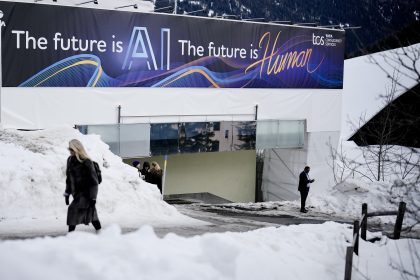One Thing This WaPo Op-ed on Nuclear Safety Wasn’t Built to Survive: Scrutiny
COMMENTARY | The Ecomodernist

A rebuttal to a Washington Post op-ed on wartime nuclear power plant safety.
On March 18, the day after I rebutted hyped media coverage of impending atomic catastrophe in Ukraine, yet another alarmist article surfaced in The Washington Post.
Kate Brown, a professor of history in Massachusetts Institute of Technology’s Science, Technology and Society Department, co-wrote (with Susan Solomon) an op-ed titled “One thing nuclear power plants weren’t built to survive: War.”
While the title may dupe readers into believing that nuclear power plants are somehow unique in this respect, they are no different from other critical infrastructure, with one exception: They are hardened structures with layers of safety margin and defenses against unsafe radiological releases to the public.
In her op-ed, Brown writes:
… we can still expect plenty more fearful nights spent riveted to scenes of battles over huge concrete towers and rows of basins filled with radioactive spent nuclear fuel: It turns out that reactor containment buildings have never been stress-tested for blows from heavy artillery or missiles. Even without a direct hit on a reactor, we are learning of the fragility of nuclear power plants… For a long while — even as recently as last month — nuclear power looked like a possible solution to climate change, despite the risks surrounding its reactors and spent fuel. But we now see that it is vulnerable not only to terrorism but to war.
While Brown appears to be revealing her own irrational fear of nuclear energy, her melodramatic prophecy could not be further from reality. Much of the rest of her op-ed is similarly jaundiced and unsupported by reputable sources.
Brown’s breathless misrepresentations resemble the kind of sensational writing I called out in my March 17 post.
- When she writes about “battles over huge concrete towers,” is she referring to the massive concrete cooling towers that dissipate heat from secondary (non-radioactive) systems to the atmosphere?
- Are her “rows of basins filled with radioactive spent nuclear fuel” a reference to a spent fuel pool with used fuel assemblies neatly stored in matrixed grids under pools of clear, filtered and borated water, and housed within a containment structure with five-foot thick concrete walls?
One thing is clear: Brown’s assertion that nuclear power plants are “fragile” appears to be misplaced. Instead of explaining how or why the plants are fragile, she goes on to describe the unimaginably hostile working conditions of plant personnel, who are very human but not necessarily fragile.
Indeed, they have bravely operated and maintained Ukraine’s nuclear facilities despite the many obstacles and hardships they have endured since Russia brutally invaded their homeland.
The potential for human error at the Ukrainian reactors is the greatest contributor to risk, not “fragile” nuclear power plants. Moreover, the risk from human error caused by fatigue is presently low since shift workers are again rotating at the Chernobyl site.
Fact-based information is lacking in Brown’s commentary. Rather, her op-ed conveyed a brink of nuclear disaster. Real science and engineering offer an alternative to her apocalyptic narrative.
Take a deep sigh of relief and read on.
How Vulnerable Are Nuclear Power Plants?
In 1988, the U.S. government conducted experiments to test the robustness of the steel-reinforced concrete that is used to construct light-water reactor containments in the United States, structures that are of similar design to the containments of VVER type reactors in Ukraine.
The Department of Energy’s Sandia National Lab hurled an F4 Phantom jet at close to 500 MPH directly into a simulated containment structure. The jet was essentially obliterated upon impact. The concrete structure suffered only minor surface damage.
After 9/11, these tests were instrumental in assessing potential impacts of large aircraft hitting reactor containment structures.
Since Russia invaded Ukraine, misinformation about Ukraine’s nuclear reactors has been repeated in mainstream news media.
This is dangerous because it perpetuates long-standing misconceptions of the radiological risks of nuclear power to the public while ignoring its benefits to human health and the environment. Nuclear generation emits zero carbon (unlike coal and gas) and is much more reliable than other green technologies (like wind and solar).
In response, Dr. Adam Stein and I co-authored “Frequently Asked Questions: Ukraine Nuclear Power Plants.” We specifically covered the wide range of risks to infrastructure, human health and the environment relative to those of nuclear safety during military conflicts. It is worth quoting point eight at length:
How does this compare to other catastrophes in war zones? Major industrial infrastructure, from refineries and petrochemical plants to dams, bridges, and roads, are frequently damaged in military conflicts, intentionally and unintentionally, and often have substantial public health and environmental consequences. Oil wells set afire during the first Gulf War, for instance, are estimated to have caused as much as $40 billion in environmental damage and as many as 1000 fatalities from respiratory ailments. In addition, many thousands of civilians have perished in dozens of commercial aircraft unintentionally shot down in military conflicts. Those consequences, however, are almost always vastly less significant than the suffering and damage associated with the conflicts themselves.
Virtually no civilian infrastructure is designed to operate in a war zone. But modern light-water nuclear power stations, sheathed in concrete containment structures, supported by multiple redundant electrical and cooling systems, surrounded by large exclusion zones, and guarded by security forces, are better engineered to withstand military operations and attack than any other class of civilian infrastructure.
The current situation in Ukraine poses very low radiological risks from military operations around the Chernobyl and Zaporizhzhia nuclear facilities.
So then why did Brown choose to inflame local and global panic with her op-ed rather than present a balanced account of the facts? I asked the same question.
In seeking to better understand her arguments, I explored the internet and discovered Brown is the author of “Manual for Survival: A Chernobyl Guide to the Future.” This work is described as “a chilling exposé of the international effort to minimize the health and environmental consequences of nuclear radiation in the wake of Chernobyl.”
Brown also contributes to Beyond Nuclear International, widely known for its anti-nuclear rhetoric. In an article she wrote for BNI titled “Five Myths about the Chernobyl Disaster,” Brown alleges under-reporting of prompt and latent fatalities caused by the accident and speculates “the actual numbers may be far higher.” She further claims that reports at the time of the Chernobyl accident underestimated the consequences from the plume of radioactive gas and particulates; she goes on to describe suppressed pine tree growth and abnormalities/deformities in small animals and birds around the Chernobyl site that “might also affect large mammals.”
Her theory that an alleged cover-up shortly following the Chernobyl accident exists to this day is unfounded, as is her speculation that radiation from the accident is currently harming flora and fauna alike.
The Myths of Chernobyl’s Legacy
Early reports are hardly relevant after 35 years and an extensive study of the radiological, environmental and health consequences of the Chernobyl accident in the most heavily contaminated areas — Belarus, Russia and Ukraine — led by the International Atomic Energy Agency.
The IAEA-led team of 200 experts from 25 countries found no human health effects related to radiation from the Chernobyl accident. Rather, these experts found “paraly[z]ing fatalism due to myths and misperceptions about the threat of radiation, which has contributed to a culture of chronic dependency.”
More recent studies have corroborated IAEA’s 1991 findings. For example, between 1988 and 2018 the United Nations Scientific Committee on the Effects of Atomic Radiation has issued numerous assessments on the health effects of radiation from the Chernobyl accident. Additionally, the ongoing work of Professor Gerry Thomas, a molecular pathologist with the Imperial College of London who specializes in cancer research, similarly confirms IAEA’s 1991 findings through collection and examination of tissue samples from areas of Ukraine and Russia near the Chernobyl site.
In the aforementioned BNI article, Brown further characterizes deliberate Cold War bomb tests as nuclear accidents that she claims are far worse than Chernobyl. She also rebuts a well-informed root cause analysis of the accident conducted by Chernobyl chief engineer and author Grigori Medvedev.
Rather than address Medvedev’s investigatory findings that procedural errors and a lack of technical expertise among political appointees in crucial positions led to the accident, she argues that the Soviet response to Chernobyl was impressive and implies the Japanese response to the Fukushima Daiichi accident was inept.
On March 9, 2020, Brown, then a professor of history at University of Maryland, Baltimore County, published a question and answer blog about her book on Chernobyl and conflicting reports of prompt and latent human fatalities by U.N. sources and Greenpeace. In her blog, she opined on the safety of nuclear power generation:
As societies around the world face the consequences of climate change, proponents of nuclear energy argue that nuclear power is a safe and feasible option to reduce dependence on fossil fuels. Before we take that big leap of investment in an extremely expensive and slow-to-develop technology, we should know more about accidents of the past.
What Brown omits from her blog and The Washington Post op-ed is that the conflicting reports by U.N. sources and Greenpeace are exactly what prompted the extensive IAEA study in 1990-1991.
She also fails to mention that “accidents of the past” have led to communications from nuclear regulators; international sharing of operating experience; extensive international evaluations of lessons learned; nuclear power plant retrofits and modifications; the issuance of regulatory orders; promulgation of new regulatory requirements; operator training; and a host of other programmatic initiatives and procedural enhancements to minimize the potential for recurrence of an accident precursor or any other safety issue.
Perhaps Brown is unaware of these salient details, or maybe they were inconvenient to her anti-nuclear bent. Either way, Brown’s sensational writing is disconcerting, especially for the people of Ukraine. Their hospitals, churches, schools and residential dwellings were not designed for war, and they are far more fragile and vulnerable to military bombardment than a Ukrainian nuclear power plant. Moreover, these soft civilian places of healing, worship, education and refuge have been targeted in the conflict, with many hundreds of lives lost.
At present, the Chernobyl site and Zaporizhzhia nuclear power plant in Ukraine have withstood close-range military operations. The courageous women and men who operate and maintain these facilities deserve commendation and gratitude.
The last thing they, their families, their fellow Ukrainians and their neighboring countries need to be burdened with is irrational fear — stoked by reports like Brown’s — of an imminent nuclear doomsday.
Rani Franovich is senior policy advisor, Nuclear Energy Innovation at The Breakthrough Institute, an environmental research center based in Berkeley, California, and a former regulator at the U.S. Nuclear Regulatory Commission. Follow her on Twitter @RFMeraxes.























